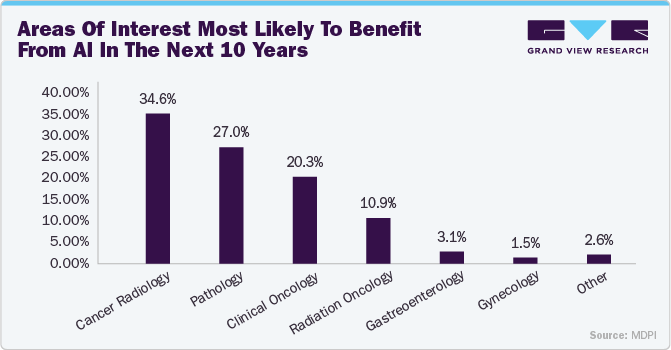The global customer experience management market size is expected to reach USD 32.87 billion by 2030, registering a CAGR of 15.8% from 2024 to 2030, according to a new report by Grand View Research, Inc. Customer experience management (CEM) solutions are gaining widespread popularity in diverse industries. As businesses become more customer-centric, the market is expected to witness rapid growth over the forecast period. Ongoing trends such as hyper-personalization of customer service, the use of AI & automation, and various customer value models are the key attributes propelling the growth. Moreover, implementing robust social media customer service can help reduce costs, increase response times, improve customer satisfaction, and increase the adoption of the CEM platform across industries. Thus, driving industry growth.
Gather more insights about the market drivers, restrains and growth of the Global Customer Experience Management Market
As working from home becomes more common, facilitated by video conferencing, digital transformation of the customer and employee experience will be critical for growth. Remote working frequently leads to higher Employee Satisfaction (E-SAT), which leads to higher overall Customer Satisfaction (C-SAT). A remote workforce allows an organization to hire the best talent from all over the world, which improves both the local and global customer experiences. Organizations that want to keep their customer experience scope onshore/nearshore could benefit from a right-shored work-at-home model rather than an offshore-only model. These developments would further drive industry growth.
Organizations have implemented new business models to broaden their customer reach and improve the end-user experience. Organizations are also working to improve their ability to adapt to changing customer expectations as well as market conditions. Several industries and industry verticals are expanding their customer reach by utilizing various e-commerce models, such as e-retail, direct-to-customer (D2C), marketplace, and social commerce. For instance, Oracle Corp., a software company, provides Oracle Commerce, a unified B2C and B2B e-commerce platform. The solution uses interactive dashboards and data visualizations and takes real-time insights from every customer engagement.
Customer Experience Management Market Segments Highlights:
• The speech analytics segment is expected to witness a CAGR of 18.4% from 2024 to 2030. Through the calls, they assist enterprises in identifying the areas of trends, opportunities, and concerns. Speech analytics tools in contact centers help improve agent performance, monitor compliance, streamline business processes, improve first-call resolution, and improve customer experience
• The web services segment is anticipated to grow at a CAGR of 17.4% from 2024 to 2030. CX web services provide the tools and expertise to measure, analyze, and improve customer interactions, leading to a strong ROI for businesses. Moreover, the rise of cloud-based Software as a Service (SaaS) offerings has made CX web services more accessible and affordable for businesses of all sizes
• The cloud segment is anticipated to grow at a CAGR of 18.3% from 2024 to 2030. The cloud deployment model enables enterprises to purchase only the features, added applications, or updated versions of the software, based on the pay-as-you-go subscription model. On account of these benefits, large enterprises are gradually investing in CEM software and collaborating with technology providers for digital transformation
• The BFSI segment is anticipated to register the highest CAGR of 17.1% from 2024 to 2030 owing to the increasing adoption of cloud-based deployment models and investments in advanced technologies to offer digital finance management assistance
• The Asia Pacific regional market is expected to register the highest CAGR of 17.5% from 2024 to 2030 due to a strong presence of call centers, an increasing trend of social media marketing, and a growing emphasis on customer satisfaction across industries & sectors
Order a free sample PDF of the Customer Experience Management Market Intelligence Study, published by Grand View Research.
Segments Covered in the Report
Grand View Research has segmented the global customer experience management market based on analytical tools, touch point type, deployment, organization size, end-use, and region:
Customer Experience Management (CEM) Analytical Tools Outlook (Revenue; USD Billion, 2018 - 2030)
EFM Software
Speech Analytics
Text Analytics
Web Analytics & Content Management
Others
Customer Experience Management (CEM) Touch Point Type Outlook (Revenue; USD Billion, 2018 - 2030)
Stores/Branches
Call Centers
Social Media Platform
Email
Mobile
Web Services
Others
Customer Experience Management (CEM) Deployment Outlook (Revenue; USD Billion, 2018 - 2030)
Cloud
On-premises
Customer Experience Management (CEM) Organization Size Outlook (Revenue, USD Billion, 2018 - 2030)
Large Enterprises
Small and Medium Enterprises
Customer Experience Management (CEM) End-use Outlook (Revenue, USD Billion, 2018 - 2030)
BFSI
Retail
Healthcare
IT & Telecom
Manufacturing
Government, Energy & Utilities
Construction, Real Estate & Property Management
Service Business
Others
Customer Experience Management (CEM) Regional Outlook (Revenue, USD Billion, 2018 - 2030)
North America
U.S.
Canada
Mexico
Europe
UK
Germany
France
Italy
Asia Pacific
China
India
Japan
South Korea
Australia
New Zealand
Latin America
Brazil
Middle East & Africa (MEA)
UAE
KSA
South Africa

